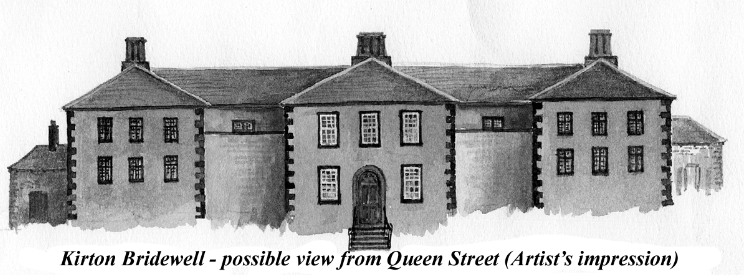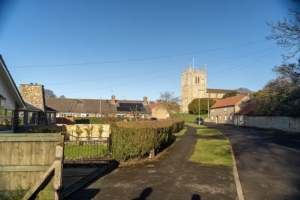9
Kirton House Of Correction
You are looking at all that remains of Kirton in Lindsey House of Correction (Bridewell).
Kirton Bridewell
In 1789 the local magistrates decided that a new House of Correction should be built at Kirton in Lindsey which conformed to recent prison reform law. The 1777 Penitentiary Act recommended improvements in how prisoners were treated and imprisonment as an alternative sentence to death or transportation.
The design incorporated all the latest requirements for a prison at that time. It included separate day rooms, work rooms, exercise yards and a bath room and laundry room. It was built to house approximately 116 prisoners and would have been an imposing structure in such a small town of around 200 households
Life for the Inmates
This decision changed the status of Kirton in Lindsey. Economically, it would be the equivalenttoday of a major manufacturer building a factory in the town.
Life at Kirton Bridewell for the inmates would follow a pattern and was based on two fundamental beliefs of the time; that crime was born of idleness and poverty was the result of a lack of willingness to work diligently. Thus, prisoners were sent to do ‘hard labour’ which was seen as both a punishment and the establishment of a discipline which would help them to rehabilitate back into society.
Over time ideas changed about prison discipline and inmates were put to spinning, weaving, mat making, basket making and knitting.
Education of the young and very young was also considered appropriate and in 1866, figures show that there were 28 prisoners under 16 years of age and 4 of those were under 12. The responsibility for educating the prisoners fell to the Chaplain.
This photograph was taken around 1886 and shows the prison in ruins.
What Remains Today
Lincoln Prison was opened in 1872 and Kirton House of Correction closed in 1873 and was sold off. Several buildings were built from its remains, notably, the old Police Station and the Town Hall.
What remains today was originally the Governor’s House. It was bought by Arthur Duckering around 1877 and was the family home for him and his very large family of 9 girls until 1958. By this time, it was renamed The Priory and was, for a while in the 1980s and 90s, a residential home but is now a private residence again. The street you are standing on was once called Prison Hill but was renamed Queen Street in 1901.
Continue along Queen Street into St Andrew’s Street where you will find The Wesleyan Methodist Chapel.





